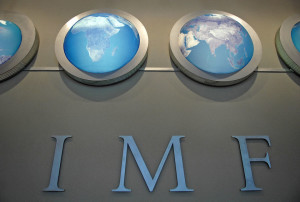Precautionary and Liquidity Line for Morocco
Press Release No. 15/39
On February 6, 2015, the Executive Board of the International Monetary Fund (IMF) concluded the first review of Morocco’s economic performance under a program supported by a 24-month Precautionary Liquidity Line (PLL) arrangement.
The PLL was approved in July 2014 in an amount equivalent to SDR 3.23 billion (about US$5 billion or 550 percent of Morocco’s quota at the IMF). (See Press release No. 14/368). The access under the arrangement in the first year will be equivalent to SDR 2.9 billion (about US$4.5 billion), rising in the second year to a cumulative US$5 billion. Morocco’s first 2-year PLL arrangement was approved on August 2, 2012.
The Moroccan authorities have stated that they intend to treat the arrangement as precautionary, as they have done with the 2012 PLL, and do not intend to draw under the arrangement unless Morocco experiences actual balance of payments needs from a significant deterioration of external conditions.
The PLL was introduced in 2011 to meet more flexibly the liquidity needs of member countries with sound economic fundamentals and strong records of policy implementation but with some remaining vulnerabilities.
Following the Executive Board discussion on Morocco, Mr. Naoyuki Shinohara, IMF Deputy Managing Director and Acting Chair of the Board, made the following statement:
“Despite headwinds from external environment, decisive policy action by the authorities has helped in rebalancing Morocco’s economy and in reducing fiscal and external vulnerabilities. Nonetheless, significant external risks remain and sustained implementation of reforms is essential to consolidate gains in macroeconomic stability and foster higher and more inclusive growth. The arrangement under the Fund’s Precautionary and Liquidity Line (PLL), which the authorities treat as precautionary, has supported the authorities’ efforts by providing an insurance against those risks.
“The fiscal deficit declined in 2014 and reached the authorities’ objective of 4.9 percent of GDP. Commendable progress was made in subsidy reform with the removal of subsidies on all liquid petroleum products, while support to the most vulnerable was expanded. The new organic budget law is expected to strengthen the budgetary framework once comments from the constitutional council have been addressed. The parametric reform of the public pension system is urgent to ensure the viability of the system. Continued tax reform is also important to bolster the contribution of the fiscal sector to growth.
“The current account deficit contracted significantly in 2014 while the reserve position strengthened, benefiting mainly from the rise in newly developed export sectors and a positive terms-of-trade shock following the fall in international oil prices. To sustain these gains, structural reforms to enhance competitiveness continue to be a priority. A transition to a more flexible exchange rate regime would also help. The business environment has improved but much remains to be done to enhance transparency and governance. The new banking law is welcome to support the continued soundness of the banking sector. The labor market needs further reform to help reduce unemployment.”








